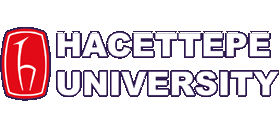| Obligation |
: |
Must |
| Prerequisite courses |
: |
- |
| Concurrent courses |
: |
ELE225 |
| Delivery modes |
: |
Face-to-Face |
| Learning and teaching strategies |
: |
Question and Answer, Experiment, Other: This course must be taken together with ELE225 FUNDAMENTALS OF DIGITAL SYSTEMS. |
| Course objective |
: |
Intensify the class material taught in ELE225 via experiments. Present contemporary tools and methods, and equip students with the capability of analyzing and designing combinational and sequential systems. Provide the students with laboratory experience and basic ability in using a Hardware Description Language (HDL). |
| Learning outcomes |
: |
A student who completes the course successfully will be able to Analyze, design and build combinational logic circuits, Analyze, design and build synchronous and asynchronous sequential logic circuits, Design and analyze counters, registers and memory structures, Understand the function of hardware description languages (HDL) and use these languages to model, analyze and design a circuit. |
| Course content |
: |
Design and implementation of logic gate circuits, Implementation of digital circuits with hardware description languages, Design and implementation of combinational and sequential logic circuits, Creation and evaluation of test benches for circuits implemented with hardware description languages. |
| References |
: |
Experiment Notes. ; Mano M.M., Ciletti M.D., Digital Design, 6/e, Pearson, 2019.; Wakerly J.F., Digital Design: Principles and Practices, 5/e, Pearson, 2018. ; Ciletti M.D., Advanced Digital Design with the Verilog HDL, 2/e, Pearson, 2011. |
Course Outline Weekly
| Weeks |
Topics |
| 1 |
Facts and figures of Digital Systems Laboratory |
| 2 |
Introduction to digital design tools and simulation software |
| 3 |
Preliminary work (report etc.) for Experiment 1 |
| 4 |
Experiment 1: Implementation of adders, multipliers, comparators, parity generators |
| 5 |
Preliminary work (report etc.) for Experiment 2 |
| 6 |
Experiment 2: Implementation of decoders, encoders, and multiplexers |
| 7 |
Preliminary work (report etc.) for Experiment 3 |
| 8 |
Experiment 3: Implementation of latches, flip-flops, synchronous sequential circuits |
| 9 |
Preliminary work (report etc.) for Experiment 4 |
| 10 |
Experiment 4: Implementation of registers, shift registers and arithmetic/logic circuits using shift registers |
| 11 |
Preliminary work (report etc.) for Experiment 5 |
| 12 |
Experiment 5: Implementation of synchronous and asynchronous counters |
| 13 |
Preliminary work (report etc.) for Experiment 6 |
| 14 |
Experiment 6: Implementation of memory structures, RAMs, ROMs |
| 15 |
Preparation for final exam |
| 16 |
Final exam |
Matrix Of The Course Learning Outcomes Versus Program Outcomes
| Key learning outcomes |
Contribution level |
| 1 |
2 |
3 |
4 |
5 |
| 1. |
Possesses the theoretical and practical knowledge required in Electrical and Electronics Engineering discipline. | | | | | |
| 2. |
Utilizes his/her theoretical and practical knowledge in the fields of mathematics, science and electrical and electronics engineering towards finding engineering solutions. | | | | | |
| 3. |
Determines and defines a problem in electrical and electronics engineering, then models and solves it by applying the appropriate analytical or numerical methods. | | | | | |
| 4. |
Designs a system under realistic constraints using modern methods and tools. | | | | | |
| 5. |
Designs and performs an experiment, analyzes and interprets the results. | | | | | |
| 6. |
Possesses the necessary qualifications to carry out interdisciplinary work either individually or as a team member. | | | | | |
| 7. |
Accesses information, performs literature search, uses databases and other knowledge sources, follows developments in science and technology. | | | | | |
| 8. |
Performs project planning and time management, plans his/her career development. | | | | | |
| 9. |
Possesses an advanced level of expertise in computer hardware and software, is proficient in using information and communication technologies. | | | | | |
| 10. |
Is competent in oral or written communication; has advanced command of English. | | | | | |
| 11. |
Has an awareness of his/her professional, ethical and social responsibilities. | | | | | |
| 12. |
Has an awareness of the universal impacts and social consequences of engineering solutions and applications; is well-informed about modern-day problems. | | | | | |
| 13. |
Is innovative and inquisitive; has a high level of professional self-esteem. | | | | | |
